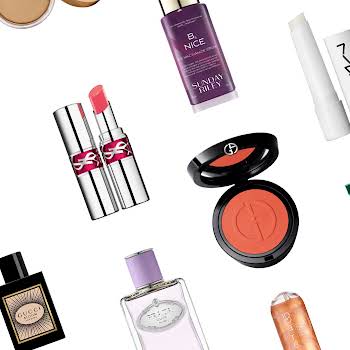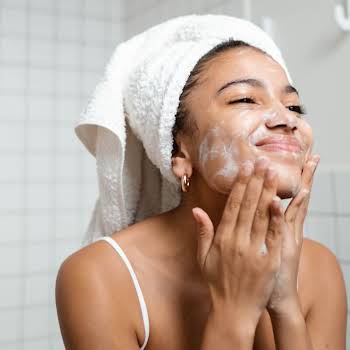
By Holly O'Neill
13th May 2020
13th May 2020
Soaring temperatures shouldn’t be the only reason you’re reaching for the SPF. Rain or shine, there’s plenty of evidence to get you using it every day
“If I could offer you only one tip for the future, sunscreen would be it.” is is the introduction to director Baz Luhrmann’s cult song, “Everybody’s Free to Wear Sunscreen”, the lyrics of which were adapted from a mock-graduation speech written in the Chicago Tribune by journalist Mary Schmich. The song came out in 1998. The advice is still relevant.
According to the National Cancer Registry, mortality rates for some individual cancers, notably melanoma of the skin, show ongoing or recent increases. Almost 11,000 invasive skin cancers were diagnosed per year in Ireland between 2011 and 2015, with the equivalent of 30 skin cancer diagnoses daily.
Consultant dermatologist Dr Rosemary Coleman says Irish people are particularly at risk for skin cancer “because we predominantly have Fitzpatrick Type 1 and 2 skin, with little or no inherent protection from damaging UV rays.” The Fitzpatrick skin type is a numerical scale based on a person’s skin colour’s response to sun exposure. With our fair complexions, we have very little natural melanin protection. However, no matter your skin type, you won’t block the sun from burning your skin, it’ll just take a bit longer.
The time it takes your skin to burn without protection is important for understanding the numbers on your SPF. What does the number 50 on SPF 50 mean? According to Dr Coleman, “ The number that makes up the SPF rating is based on a ratio. SPF x the time it takes to burn = time needed to receive the same dose of UV that you’d have gotten if you hadn’t used sunscreen. So, using sunscreen with an SPF of 50 means that an average person would be protected for 50 times longer than if they’d gone without.”
UVA rays are 100 times more numerous than UVB. They are all over the world, and can travel through clouds, water and the window of your car. You can thank these rays for ageing, sagging skin and skin disorders. UVB rays are responsible for sunburn. An easy way to remember is UVA for Ageing and UVB for Burning. Dr Coleman says that it still hasn’t seeped in that, even in Ireland, we should be using sun protection 365 days of the year. “People – even my skin cancer patients – are always saying to me that they use SPF when the sun is out, but I explain that after sunrise, there are always damaging rays about, whether they can see them as sunshine or not.”
So what actually happens to the skin when it’s been burnt by the sun? Dr Coleman says the skin “gets damaged, resulting in loss of elastic tissue and collagen, pigmentary change resulting in blotchy ‘liver spots’, broken blood vessels and most importantly, DNA damage, giving rise to pre-cancerous and cancerous lesions.”
Francoise Bernerd, a photobiologist working more than 30 years with L’Oréal studying photoprotection and the effects of light rays on the skin, says, “In a sunburn’s redness, you have a direct impact in the DNA of all your cells. It can be repaired, but if you increase the frequency of sun exposure, that’s when you take risks.”
So what are we still getting wrong about sunscreen? It turns out, our attitudes to applying SPF every day still need some work. “Application of SPF is far more important than brushing your teeth,” says Dr Coleman. “Your teeth can’t kill you, but no one checks the weather before deciding whether to brush them or not, it’s automatic. That’s the way SPF should be. People have started to get better about putting it on their face, but still forget their neck, chest and hands for daily use 365 days a year, regardless of the weather. So I ask my patients, ‘Do you just wash your top teeth? Do you decide whether you’ll wash your bottom teeth or not?’ Include the neck and chest. The latter is a very common area for skin cancer in women, and the fragile chest skin gets very sun damaged very easily.”
A couple of years ago, the difference between chemical and physical sunscreen came under a lot of debate. Dr Coleman says there are pros and cons to both. Physical sunscreen is naturally broad spectrum, meaning it protects against both UVA and UVB (make sure your sunscreen says both “UVA/UVB protection” and “broad spectrum” for maximum protection) and protects from the sun as soon as it’s applied, with no wait needed. Chemical sunscreen requires about 20 minutes after application before it begins to work, but tends to be thinner and spreads more easily on the skin. What’s the main difference, and which offers more protection? As Dr Coleman puts it, “Physical sunscreens sit on top of the skin, reflecting the damaging UV rays off it. These used to be very thick and white, but have improved enormously to be very cosmetically acceptable. Chemical sunscreens contain organic (carbon-based) compounds, which create a chemical reaction and work by changing UV rays into heat, then releasing that heat from the skin. Physical sunscreen offers better protection.”
According to Dr Coleman, we are not using nearly enough product. “If you want to achieve the protection on the label, strictly speaking, you would need to apply 2gr cm2 every two hours – almost half a teaspoon. Most people use nowhere near that amount.”
From Mary Schmich’s meandering advice in her essay, these are some key takeaways that stand out for me every time I hear it: “You are not as fat as you imagine. Don’t waste your time on jealousy. Remember the compliments you receive. Forget the insults. If you succeed in doing this, tell me how. Keep your old love letters. Throw away your old bank statements. Your body is the greatest instrument you’ll ever own. Travel. But trust me on the sunscreen.”

This article originally appeared in the June issue of IMAGE Magazine.
Read more: Matt Damon’s first Irish interview about living in Dalkey was brilliant
Read more: An architect builds her own passive farmhouse in Borris, Co Carlow
Read more: Self-care Diaries: Emma Thatcher, the stylist using self-tan as a pick-me-up





















